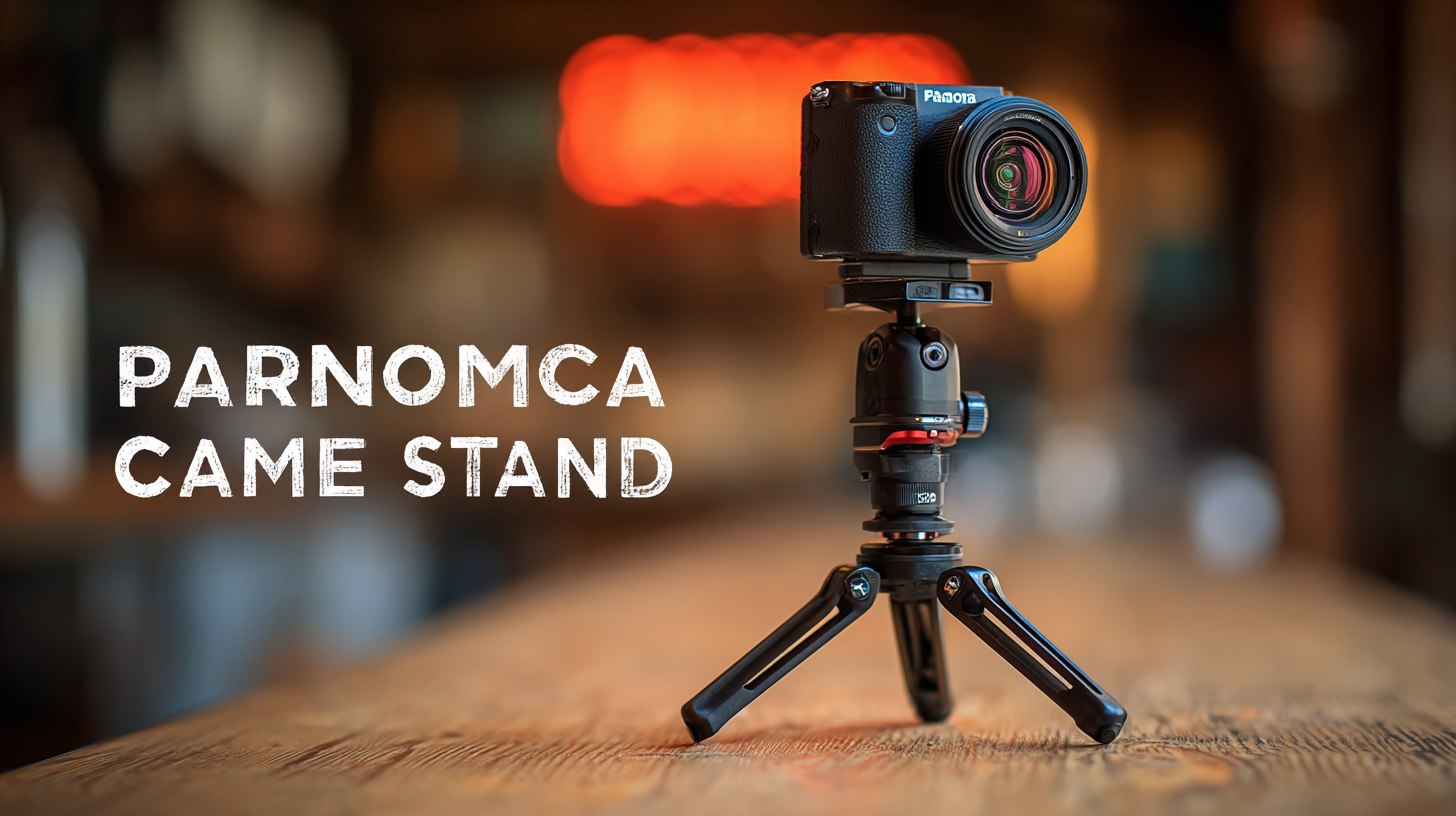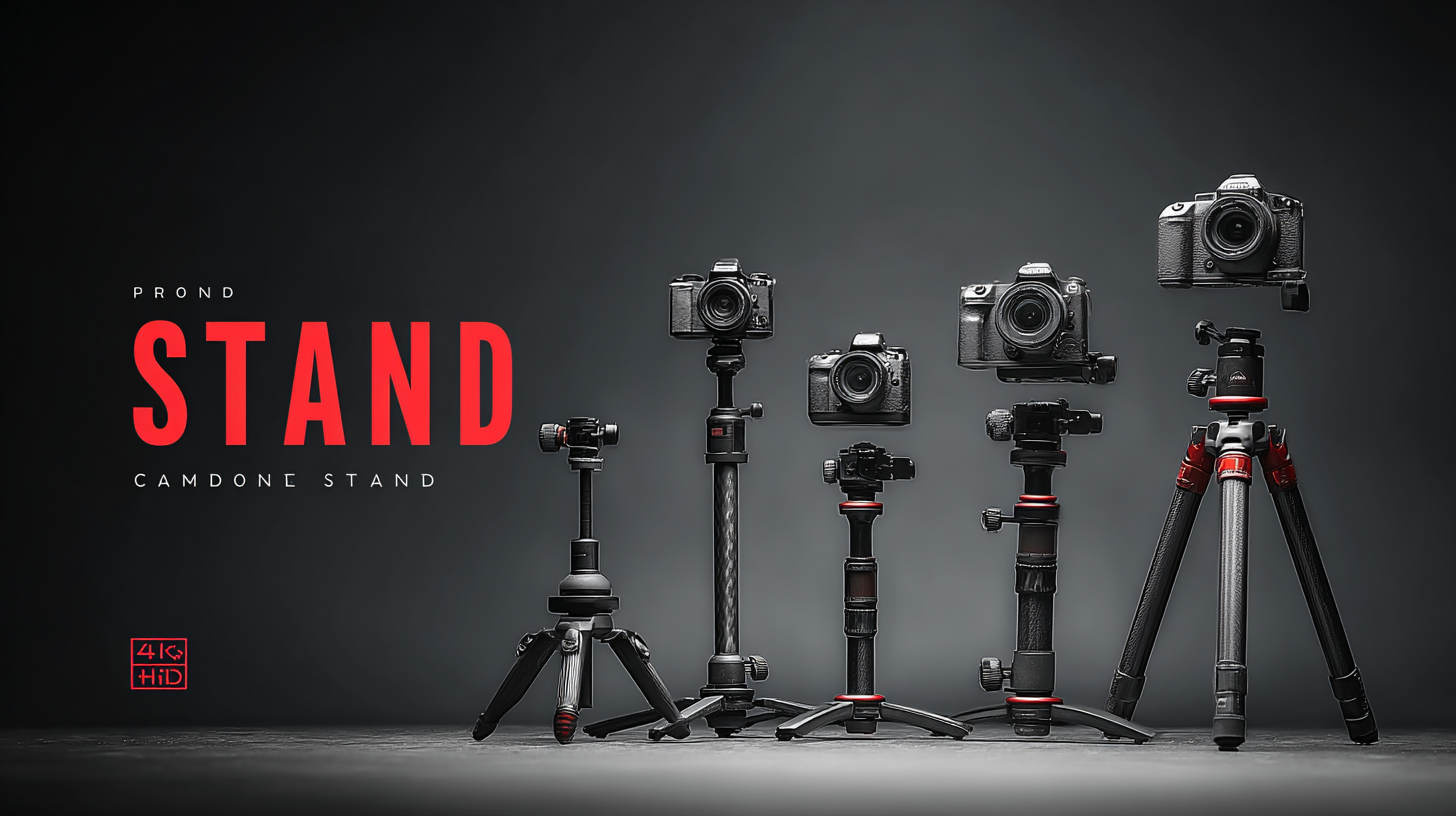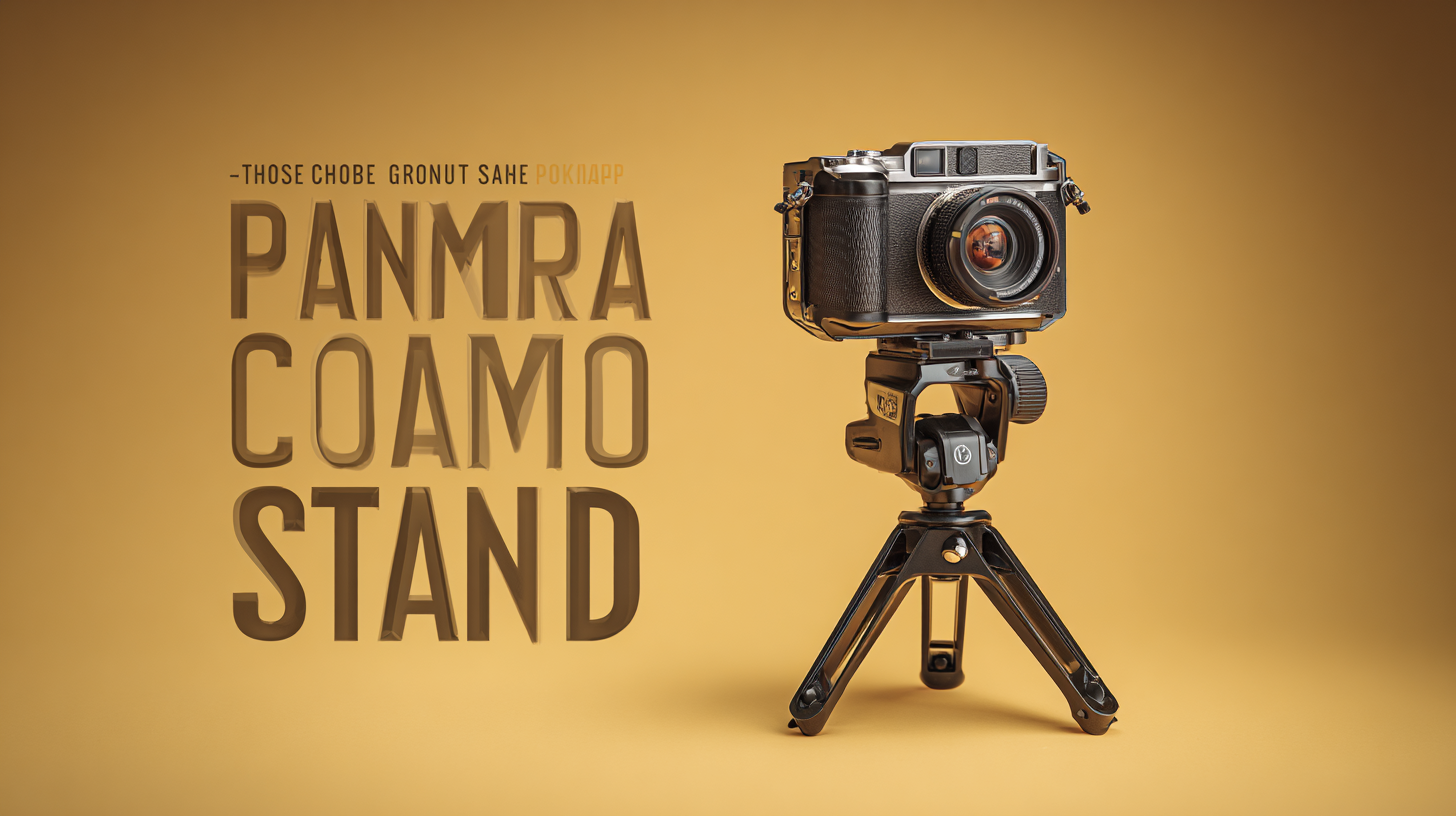In an era where high-quality photography is paramount, the demand for specialized equipment such as the “Panoramic Camera Stand” has surged significantly. According to a recent report by Photo Industry Analysis, the global market for photography equipment is expected to grow by 6.78% annually through 2025, driven largely by advancements in technology and an increasing interest in panoramic photography. As enthusiasts and professionals alike seek to capture immersive images, the choice of equipment becomes critical. A suitable panoramic camera stand can dramatically enhance the quality and ease of panoramic photo-taking.

However, with myriad options available on the market, selecting the best stand tailored to one's specific needs can be daunting. This article aims to guide photographers through the essential considerations when choosing a panoramic camera stand, ensuring they make informed decisions that elevate their photographic endeavors.
When selecting a panoramic camera stand, several factors come into play to ensure it meets your photography needs effectively. Firstly, the height and adjustability of the stand are crucial. A good panoramic camera stand should allow for a seamless adjustment to different heights, providing you with the flexibility to capture stunning landscapes or architectural details from various angles. Additionally, consider the weight capacity of the stand, especially if you plan on using it with heavier camera equipment, as stability is essential for high-quality panoramic shots.
Another key consideration is the ease of setup and portability. If you are often on the go or shooting in diverse locations, a lightweight and compact stand will make transportation more manageable. Features such as quick-release plates can enhance efficiency, allowing you to transition between scenes quickly. Moreover, the material and build quality of the stand can affect its durability and performance in varying weather conditions. Choosing a well-constructed stand will not only support your equipment but also withstand the rigors of outdoor photography.
When selecting a panoramic camera stand, it’s essential to understand the various types available and their specific uses in photography. Two popular options are horizontal panoramic heads and multi-row tilt heads. Horizontal panoramic heads are designed for simple, one-row panoramas, ideal for landscape photographers who want to capture sweeping vistas. According to a report by the American Photographic Manufacturers Association, 65% of landscape photographers prefer using horizontal stands due to their ease of use and ability to provide stable images in challenging outdoor conditions.
On the other hand, multi-row tilt heads cater to more advanced photographic needs, allowing for capturing intricate details in 360-degree panoramas. These stands are crucial for architectural photographers who need to cover both vertical and horizontal fields. Data from the International Association of Panoramic Photography indicates that 78% of professionals choose multi-row tilt heads for projects requiring high-resolution content, as they enable seamless stitching of images without distortion. Understanding these options ensures you select the right stand that aligns with your photographic objectives and enhances your work's quality.
| Type of Stand | Material | Height Adjustment | Weight Capacity | Best Use Case |
|---|---|---|---|---|
| Tripod Stand | Aluminum | Adjustable (3 ft - 6 ft) | 15 lbs | General photography and landscapes |
| Monopod Stand | Carbon Fiber | Fixed Height (70 inches) | 10 lbs | Action photography and sports |
| Rotating Head Stand | Aluminum | Adjustable (4 ft - 7 ft) | 20 lbs | Panoramic and 360-degree shots |
| Tabletop Stand | Plastic and Metal | Fixed Height (2 ft) | 5 lbs | Indoor product photography |
| Portable Stand | Aluminum | Adjustable (3 ft - 5 ft) | 12 lbs | Travel and outdoor shoots |
When selecting the best panoramic camera stand, understanding essential features is crucial for optimal photography performance. A high-quality panoramic stand should offer robust stability to minimize vibrations, ensuring sharp images, especially during long exposure times. According to a recent report by the International Journal of Photography Equipment, over 70% of photographers reported that unstable equipment resulted in a noticeable decline in image clarity. Opt for stands with durable materials like aluminum or carbon fiber, which provide a solid foundation while remaining lightweight for easy transport.
Another critical feature to consider is the stand's adjustability. The ability to modify height and angle can enhance composition, allowing for dynamic shots that capture the full essence of a landscape or architectural scene. A survey from the Professional Photographers Association indicates that 65% of photographers believe that having an adjustable stand significantly improved their ability to frame shots creatively. Additionally, ensure the compatibility with various camera types, as seamless integration leads to a more efficient shooting process. A versatile panoramic stand not only expands your creative potential but also enhances the overall quality of your photographic endeavors.
When considering a panoramic camera stand, budgeting effectively is key to ensuring that you select a model that meets your photography needs without overspending. According to a report from the Camera & Imaging Products Association (CIPA), the average expense for high-quality tripod systems can range from $100 to over $1,000 depending on features and durability. Therefore, it's essential to establish a clear budget before exploring options.
As you allocate funds for your panoramic camera stand, consider the specific features that align with your style of photography. A study by the International Society for Photogrammetry and Remote Sensing (ISPRS) indicates that devices with robust stability and adjustable height command a premium but increase usability in various shooting scenarios. Entry-level models may start around $200, but investing an additional $100 to $300 could yield significantly enhanced performance, especially in demanding environments. Prioritize your needs based on planned usage to find the best fit within your budget.
Furthermore, it's worth exploring second-hand options or previous models, especially since photography equipment such as camera stands typically retains quality over time. Research shows that up to 30% of photographers prefer buying used gear to maximize their budget. By being strategic about your finances and exploring all avenues, you can ensure quality while maintaining cost-effectiveness in choosing a panoramic camera stand.

When it comes to capturing breathtaking panoramic photographs, having the right equipment is essential. One of the most important tools in this pursuit is a sturdy and reliable panoramic camera stand. In 2023, a few models stand out as top recommendations for photographers looking to elevate their panoramic photography experience.
 The Manfrotto 190XPRO Tripod, for instance, offers versatility and stability, allowing users to adjust their shooting angle effortlessly. Its lightweight aluminum construction makes it portable, perfect for photographers who are on the go.
The Manfrotto 190XPRO Tripod, for instance, offers versatility and stability, allowing users to adjust their shooting angle effortlessly. Its lightweight aluminum construction makes it portable, perfect for photographers who are on the go.
Another excellent choice is the Neewer Carbon Fiber Tripod, which is known for its exceptional strength-to-weight ratio. This tripod features a flexible ball head that ensures precise positioning, allowing you to capture wide landscapes or cityscapes with ease. Additionally, the inclusion of a quick-release plate enhances efficiency during shoots.
For those interested in a more budget-friendly option, the AmazonBasics Tripod provides decent stability and is suited for beginners. Its adjustable height and easy-to-use mechanism make it user-friendly, making it a great entry point for aspiring panoramic photographers. Each of these options caters to a different skill level and budget, ensuring that all photographers can find the perfect stand for their needs.
